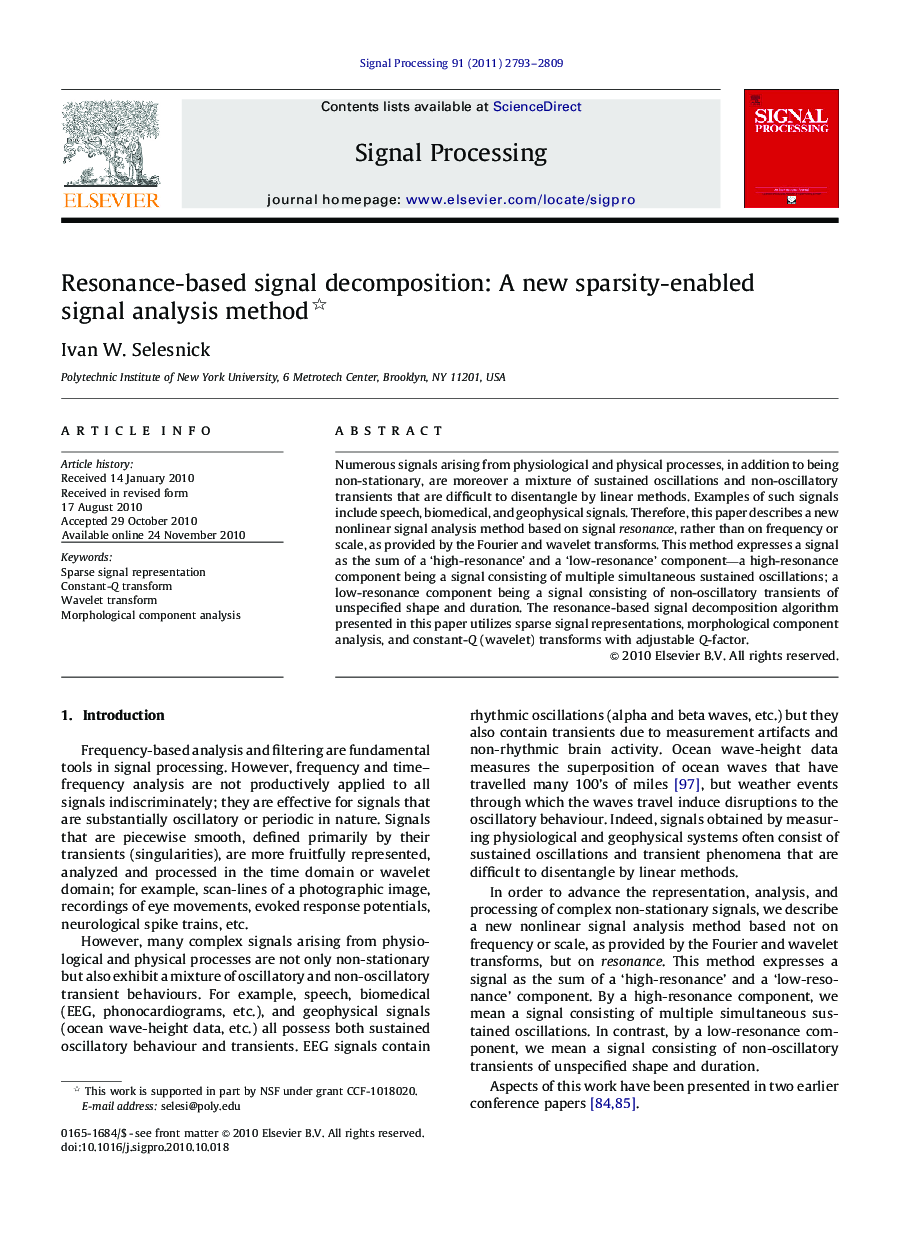| Article ID | Journal | Published Year | Pages | File Type |
|---|---|---|---|---|
| 561492 | Signal Processing | 2011 | 17 Pages |
Numerous signals arising from physiological and physical processes, in addition to being non-stationary, are moreover a mixture of sustained oscillations and non-oscillatory transients that are difficult to disentangle by linear methods. Examples of such signals include speech, biomedical, and geophysical signals. Therefore, this paper describes a new nonlinear signal analysis method based on signal resonance, rather than on frequency or scale, as provided by the Fourier and wavelet transforms. This method expresses a signal as the sum of a ‘high-resonance’ and a ‘low-resonance’ component—a high-resonance component being a signal consisting of multiple simultaneous sustained oscillations; a low-resonance component being a signal consisting of non-oscillatory transients of unspecified shape and duration. The resonance-based signal decomposition algorithm presented in this paper utilizes sparse signal representations, morphological component analysis, and constant-Q (wavelet) transforms with adjustable Q-factor.
